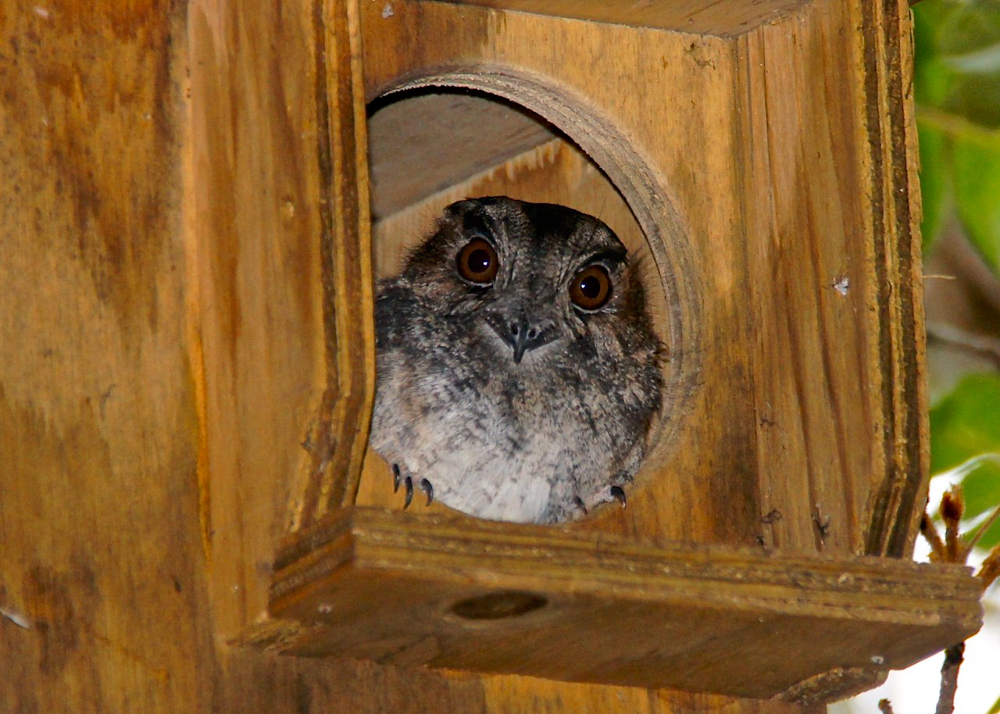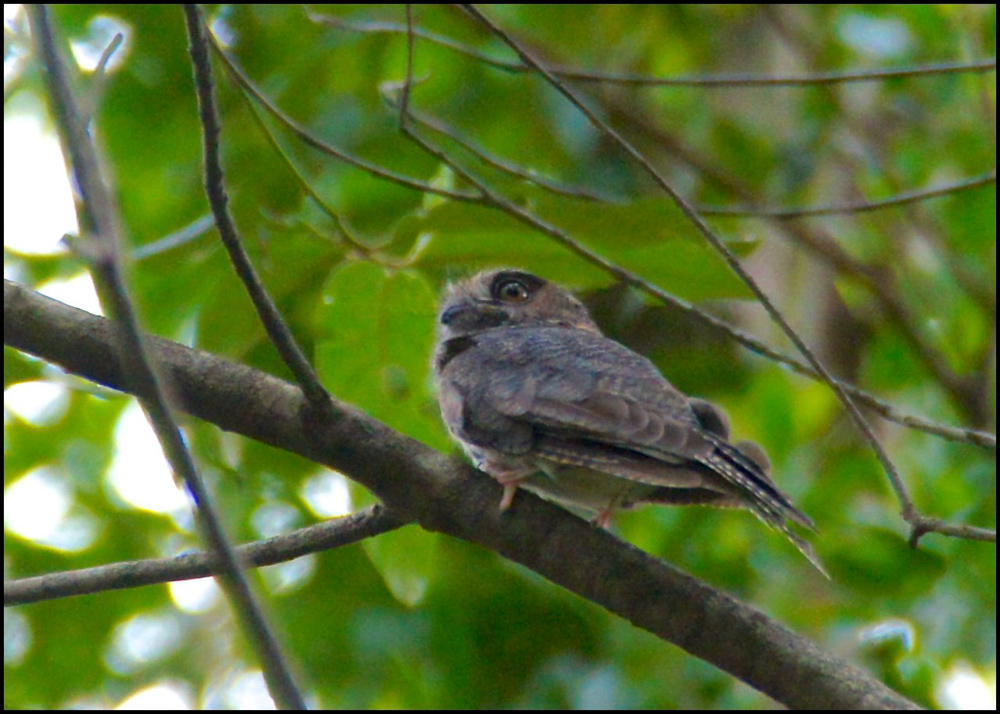Do you ever feel you are being watched? Hanging out in the bush, I often do!
Sometimes I look around and see a Swamp Wallaby staring from the darkest undergrowth, a Yellow Robin hanging on to a vertical tree or a Water Dragon watching from a distance ….
One day at my home in Brookfield, I looked around and found an amazing face watching me from the inside of a glider box, a classic cute face – soft, round, with disproportionately large eyes ….
At first I thought it was a Squirrel Glider but eventually worked out it was a special bird of the night, an Owlet Nightjar.

Owlet Nightjars are related to Frogmouths and occur across all of Australia. They spend their day in hollows and are most common in dry wooded areas. They are common in the Moggill Creek Catchment. At night, they feed on the wing on live insects, like a nocturnal Willy Wagtail.
I have come to learn that Owlet Nightjars are resident at our Brookfield home year around. In my yard, they have about six different hollow homes that they rotate between – some natural and some artificial boxes. I often find one of them at the entrance of the hollow in the day discretely sunning itself. Their call is a soft churring sound and once I came to recognise their calls, I have the pleasure of hearing them regularly both day and night.

My learnings:
- Protect every hollow tree, they are extremely precious to our native animals & birds;
- Take time to be present when in nature in Moggill Creek Catchment, there are special surprises everywhere; and
- Leave a legacy by putting up as many artificial nest boxes as possible.

